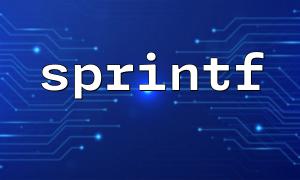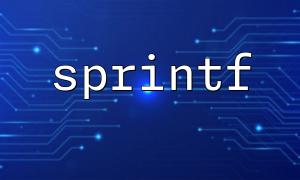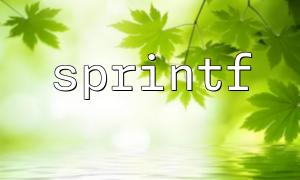In web development, preventing XSS (cross-site scripting attacks) is an important task to ensure the security of user data. PHP provides the htmlspecialchars() function to convert special characters into HTML entities, thereby effectively preventing malicious script injection. The sprintf() function is often used to format strings, especially when building HTML dynamically.
In this article, we will explain how to use sprintf() and htmlspecialchars() to build both secure and well-structured HTML output.
An XSS attack refers to an attacker injecting malicious scripts into a web page. Once the user browses the web page, these scripts will be executed in the user's browser, which may steal cookies, tamper with the page content, or perform unauthorized operations.
htmlspecialchars() is a built-in function in PHP that escapes special characters in HTML (such as < , > , & , " etc.) into HTML entities. In this way, even if the user input contains script tags, it will not be parsed into actual code.
$user_input = '<script>alert("XSS")</script>';
$safe_output = htmlspecialchars($user_input, ENT_QUOTES, 'UTF-8');
echo $safe_output;
// Output:<script>alert("XSS")</script>
sprintf() is used to insert variables into formatted strings, and it does not automatically perform any escape processing. Therefore, when outputting the data entered by the user, it should be processed using htmlspecialchars() first, and then passed to sprintf() .
$template = '<a href="%s">%s</a>';
$url = 'https://gitbox.net/page?search=<script>alert(1)</script>';
$link_text = 'Click to view';
$safe_url = htmlspecialchars($url, ENT_QUOTES, 'UTF-8');
echo sprintf($template, $safe_url, $link_text);
// Output:<a href="https://gitbox.net/page?search=<script>alert(1)</script>">Click to view</a>
Note: Although link_text is static in the above example, if it is input by the user, it must also be handled with htmlspecialchars() !
Suppose you are developing a message board, and the user-submitted nickname and message content will be displayed on the page. Here is an example of insecure:
echo sprintf('<p>%s explain:%s</p>', $_POST['name'], $_POST['message']);
An attacker can submit the following:
Nickname: <script>alert("XSS")</script>
Leave a message: <img src="x" onerror="alert('XSS')">
$name = htmlspecialchars($_POST['name'], ENT_QUOTES, 'UTF-8');
$message = htmlspecialchars($_POST['message'], ENT_QUOTES, 'UTF-8');
echo sprintf('<p>%s explain:%s</p>', $name, $message);
This way, no matter what the user inputs, it will not be parsed into actual HTML or JavaScript by the browser, thereby effectively preventing XSS attacks.
Using htmlspecialchars() to escape user input is the primary way to prevent XSS.
When building HTML output, you can combine sprintf() to perform clear structure splicing, but you must escape first and then format it .
Strictly distinguish data from structure and never trust user input.
By reasonably combining sprintf() and htmlspecialchars() , we can effectively resist common front-end attack risks while ensuring that the code is clear and readable. I hope this article will be helpful to your development work!















